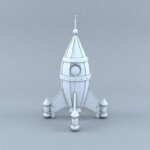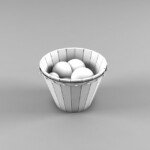Utilizing Sparks: A Comprehensive Guide to CNC Plasma Cutting
The world of manufacturing is thriving in precision and efficiency. Among the powerful tools for shaping metal manufacturing, CNC plasma cutting is outstanding in speed, versatility and relative affordability. If you risk metalworking or seek to better understand this technology, this guide delves into the basics of CNC plasma cutting, explaining how it works, its functions, and where it excels at.
What is CNC plasma cleavage?
The core of plasma cutting is through the process of using superheated, accelerated ionizing gas-plasma shot through the slice of conductive material. Think of it as a very powerful, concentrated arc. this "CNC" (Computer numerical control) aspect converts this thermal process into an accurate tool. Computer programs guide plasma torches along predefined paths according to digital designs to achieve complex shapes and repeatable cutting with high precision.
How does it work? Action Science
- Sparks ignite: Inside the plasma torch, the arc hits between the negatively charged electrode and the positively charged nozzle tip (or sometimes the workpiece itself). The initial spark is high frequency or pilot arc.
- Plasma creation: Pressurized gases (such as compressed air, oxygen, nitrogen, argon, or mixtures) are forced through narrow openings around the electrodes. When the gas passes through the strong heat of the arc, it becomes ionized – its atoms lose electrons and turn into what we call plasma conductivity, overheating state. The plasma can reach temperatures above 20,000°C (36,000°F) – higher than the sun’s surface!
- Acceleration and Cutting: The plasma gas is forcibly forced through a small orifice in the nozzle, greatly accelerating the jet and increasing its intensity. When this hot plasma flow contacts the conductive workpiece, it melts the metal locally.
- Material removal: The high-speed airflow simultaneously blows the molten metal away from the cut, resulting in KERF (width of the cut). The shielding gas around the plasma further focuses the arc and protects the cutting area.
- CNC accuracy: The entire torch assembly is mounted on a gantry system controlled by a motor that accurately follows the instructions generated from the CAD diagram (G code). This allows the torch to move in complex X, Y, sometimes Z (height control) paths, cutting off the desired shape.
Key components of CNC plasma systems:
- power supply: Provides high current DC power needed to create and maintain plasma arcs. It converts the incoming AC power supply into a smooth, constant DC current.
- CNC controller and motion system: The brain of surgery. It can interpret the CAD/CAM generated procedures and control the motor on the gantry or track system to move the torch accurately. Advanced systems include features such as torch height control (THC) to maintain optimal distances.
- Plasma torch: Main force. Holds consumables (electrodes, nozzles, rotating rings, sometimes fixed covers, shield caps) and provides airflow and current to create plasma arcs. There are manual or machine-mounted styles.
- Natural gas supply/system: Provides necessary gases (ES) for plasma and shielding functions (e.g., compression cylinders, nitrogen generators, bulk gas tanks, filters/regulators).
- Cutting table: Supports workpieces and is often combined with water beds or an effective drainage system to capture smoke, sparks and molten debris (drip irrigation). The slats remain metal and need to be replaced regularly.
- CAD/CAM software: Design and programming software is used to create part geometry (computer-aided design) and to generate tool paths and G-code specific to plasma cutters (computer-aided manufacturing).
What materials can CNC plasma be cut?
CNC plasma cutting specializes in Conductive materials. The most common ones include:
- steel: Low carbon steel, carbon steel (maximum of several inches thick)
- Stainless steel: Various grades, although the quality reduction may be affected by the heat input.
- aluminum: Thinner measurements; thicker cutting requires specific gases and techniques, and there may be more drops.
- Brass and copper: Interlude, but requires a specific process and can oxidize faster.
- Expanded metal: Can be challenging, but can be done with proper setup/support.
(notes: Materials such as wood, plastic or non-conductive composites cannot Cut with plasma. )
Advantages of CNC plasma cleavage:
- speed: Very fast cutting speeds on carbon steel, especially when compared to processes like oxygen fuel, especially in mid-end thickness (e.g. 1/4)" To 1").
- Cost-effective: Initial investment and operational costs are lower compared to lasers or water clamps compared to many medium thickness steel applications. Air plasma provides a very affordable entry point.
- Material versatility: Effectively cut almost all conductive metals.
- Thickness range: Ability to cut metal from thickness to several inches thick (depending on plasma system power). High-definition (HD) plasma systems provide better edge quality on thicker materials.
- Accuracy and complexity: CNC allows for highly accurate cutting of complex 2D shapes with good repeatability. Tolerances are typically in the range of +/- 0.5mm to +/- 1.5mm, depending on the system and settings.
- Minimum Heat Affected Zone (HAZ): Compared to oxygen fuels, plasma produces smaller HAZs, which are crucial to prevent warping and metallurgical changes in certain applications.
Limitations and considerations:
- Edge quality: Although good, plasma cutting usually has characteristic angles of bevel (especially obvious angles caused by thicker cuttings – "Notch angle"), rough "Resistance line" The texture of the cut facial, and the residue that usually needs to be cleaned. High-definition plasma can significantly improve quality. Lasers usually provide smoother edges.
- kerf width: The plasma jet removes the measurable material (KERF) and is wider than the laser cutter. This must be considered in part design, especially in nesting (arrange parts on paper).
- Heat input and distortion: A large amount of heat is applied, which can cause warping of thinner materials or thermally sensitive parts.
- Noise and smoke: A noisy process that requires a lot of hearing protection. Generates a lot of smoke and smoke, mandatory ventilation or filtration system (water table, sewer).
- consumption: The electrodes and nozzles are worn and need to be replaced regularly, which increases operating costs.
- Material Limitation: Limited to conductive metals.
CNC plasma and other cutting methods:
- Laser cutting: Laser offers more precise accuracy, smoother edges, smaller KERF and lower heat input, for complex details on paper, the premium quality is. However, plasmas usually win at the cutting speed of thicker materials (more than 1/2)." steel), low cost of entry. Fiber lasers are closing the gap in speed and cost efficiency for thicker materials.
- Cutting clip: Waterjet cuts out almost any material using ultra-high pressure water and grated grit. It does not produce heat-affected areas and excellent edge quality on thick materials (metals, stones, composites). However, it is much slower than plasma cutting metal and is often more expensive to operate.
- Oxygen Cutting: Mainly used in ferrous metal (steel). Very suitable for very thick materials, but slower than plasma, and in the mid-thickness, it is impossible to effectively cut non-productive metals. The accuracy of the composite shape is lower than that of the CNC plasma.
Conclusion: Exceeded the accuracy of the cut
CNC plasma cutting is a dynamic and essential tool in modern manufacturing that provides striking speed, affordability and versatility for cutting conductive metals. Understanding its operating principles, advantages (speed on steel), and limitations (kerf width, edge finish) facilitates manufacturers to choose the right process for each job.
Although plasma can quickly and cost-effectively produce robust parts, enabling truly complex geometries, the tightest tolerances or requiring original surface finishes, often further machining is required. This is where the capabilities of a full-service manufacturing partner like Greatlight become priceless.
As a professional five-axis CNC processing manufacturer with advanced equipment and deep technical expertise, goes beyond the steps of plasma cutting. We leverage our broad capabilities High-precision five-axis machiningturn, mill, grind and set Comprehensive post-processing service (Including cleaning, heat treatment, anodizing, plating, paint, powder coating and assembly) convert your plasma slices or other forms into truly finished high-performance components. Whether you need the complex profile of the impossible plasma torch, ultra-tight tolerance beyond plasma functionality or enhanced surface properties and appearance, Greatlight offers a complete solution.
Most materials can be quickly customized and processed. For projects requiring plasma only, Greglight’s five-axis CNC machining is the ideal first choice. We solve complex metal parts manufacturing problems under one roof to ensure quality, efficiency and optimal value.
Ready to bring your precise parts to life? [Customize your project with GreatLight today and experience the difference expertise makes!] (Link to your contact/service page)
FAQs for CNC plasma cleavage
Q1: How thick is the metal thickness of the CNC plasma cutter?
Answer: The cutting thickness mainly depends on the power (ampere) of the plasma system. Small hobby/entry level system (20-40A) can handle up to 3/8" steel. Industrial plasma cutters (100A-200A+) can cut 1.5 inches of steel and sometimes more. HD plasma further pushes higher limits with higher mass. Always consult the machine specifications of its rated capacity on a specific material.
Q2: What gas is used in plasma cutting?
A: Gas selection is crucial and varies by material:
- Low Carbon Steel (optimal mass/balance): The oxygen in the plasma, sometimes with air shielding. (The reaction between oxygen plasma and steel, improves the cutting speed).
- Low carbon steel (lower cost): Compressed Air (Plasma and Shield) – For amateurs and stores, priority costs take precedence over final quality cuts.
- Stainless steel/aluminum: Typically used for plasma and air or carbon dioxide/argon mixed nitrogen to prevent oxidation and achieve clean edges. Special gas mixtures exist for specific needs.
Q3: What causes the dripping? How to prevent/delete it?
A: Common drop ins (molten slag dissolves on the cutting edge) are common in plasma cutting. Causes include incorrect cutting speed (too slow/fast), inappropriate torch height, material/thickness of Amperage/gas pressure errors or wear consumables. Prevention involves optimizing shear parameters and using the correct consumables. Removal is usually done by grinding, debris, grinding or specialized drip irrigation tools.
Q4: How accurate is CNC plasma cutting?
A: Accuracy depends to a large extent on:
- Machine calibration/rigidity: High-quality systems are more robust.
- Torch Height Control (THC): It is crucial for consistent arc length and shear quality.
- Consumption conditions: Wear parts reduce accuracy and quality.
- process: Conventional air plasma systems typically achieve a tolerance of +/- 0.5mm to +/- 1.5mm. Under ideal conditions, HD plasma systems can achieve +/- 0.25mm or better.
Q5: Is CNC plasma cutting cheaper than laser cutting?
A: It depends on:
- Machine cost: Entry-level and mid-range plasma systems are often cheaper than comparable laser cutters.
- Operating Cost: The consumption cost of plasma (especially air plasma) is usually lower than that of lasers and does not require gases such as nitrogen or oxygen in pressure/integrity lasers are usually used to cut. Laser cutting depends on expensive optical components.
- speed: Plasma is usually cut significantly faster on thicker steel (more than ~1/2"). For thin sheet metal with intricate details, lasers are usually faster.
- consumption: Plasma requires regular electrode and nozzle replacement. The laser requires optical and nozzle replacement, but usually lasts longer.
Overall, plasma from medium thickness steel usually wins the cost per part, and the final edge smoothness does not matter. Laser wins thin sheets and work that require high quality/small kerf. Fiber lasers are changing the cost equation dynamically.
Q6: Can CNC plasma be cut into aluminum?
Answer: Yes! CNC plasma can effectively cut aluminum. However, it requires specific settings:
- Suitable gas mixture: Usually nitrogen plasma shielding. Air plasma able Use, but it can cause a lot of oxidation and instillation.
- Higher speed: Due to the lower melting point, aluminum cuts faster than steels of the same thickness.
- DROSS Management: Cutting aluminum usually produces more tenacious drips that need to be removed.
- Hot considerations: Aluminum twists are very easy, so the fixing and clamping strategies are important. High-definition plasma greatly improves the quality of aluminum.

















